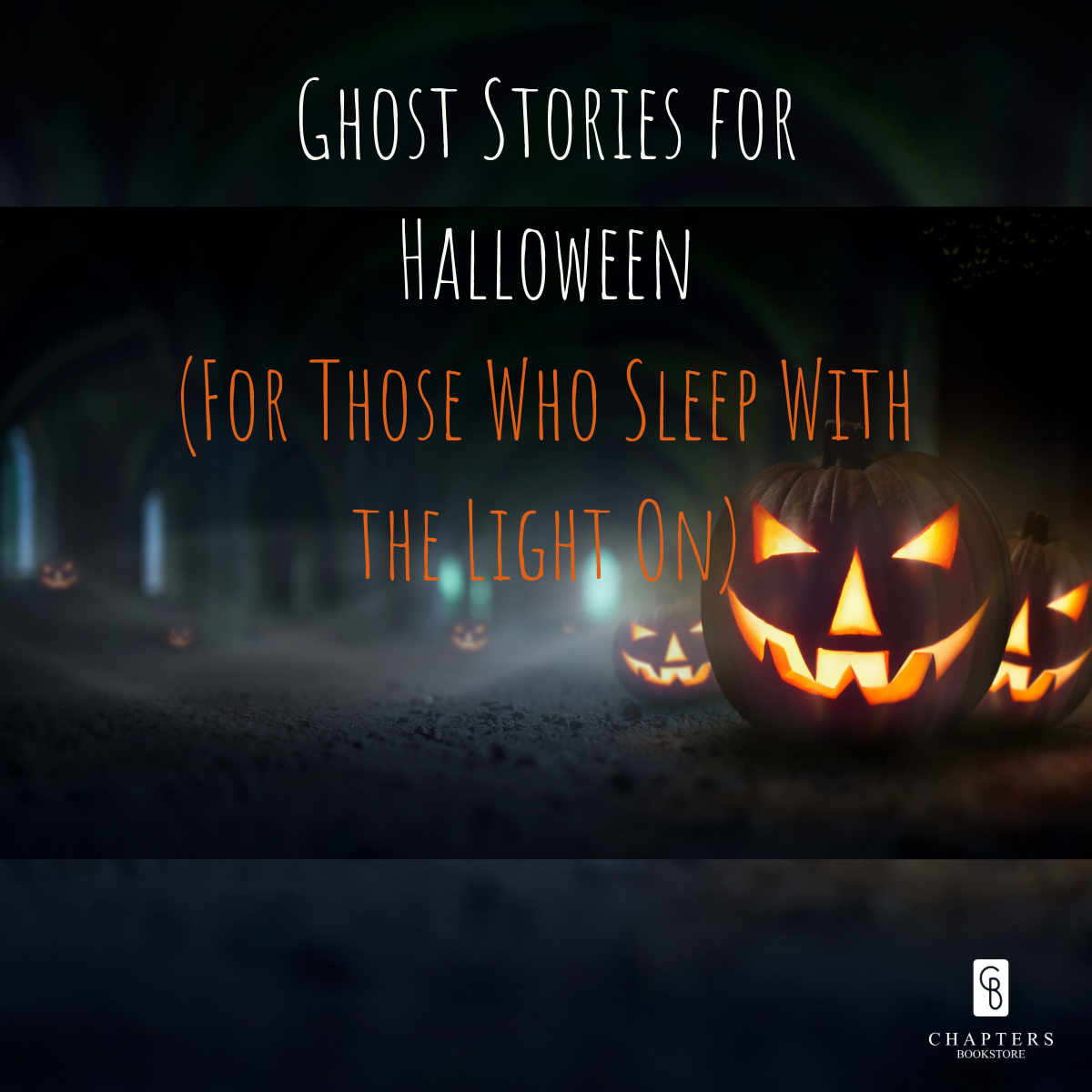
I’ll admit it right away: I am not a horror fan. I wish I were. It looks so stylish - people gliding through haunted houses on screen, nibbling popcorn, apparently unbothered by the vengeful spirits about to lunge. Meanwhile, I’m the one hiding behind a cushion, unable to sleep for a week after watching The Others. The Woman in Black on stage? Forget it - I still flinch at every creak in the house.
And yet, I adore ghost stories. I love the strange, the esoteric, the just slightly weird. I love the whisper at the edge of reason, the flicker in the corner of the eye, the suggestion that something (or someone) might still be lingering. So this isn’t a guide for gore-hounds. It’s for the easily spooked - readers who prefer their hauntings literary, uncanny, and candlelit.
We read horror and ghost stories, perhaps, because they let us face fear safely. As literary critic Noël Carroll argues, horror gives us the paradoxical pleasure of being frightened - a kind of emotional rehearsal that helps us master what we can’t control. Freud might call it the return of the repressed; Julia Kristeva would call it abjection - the thrill of confronting what we’ve tried to keep buried. In other words, the haunted house is just our own mind, creaking.
At Chapters Bookstore Dublin, where our new and secondhand shelves groan with both classics and curiosities, we know the thrill of a good chill. So here’s your Halloween reading list - organised by theme, best enjoyed with tea, blankets, and perhaps, the hallway light left firmly on.
The Classic Hauntings: Where the Shadows Began
It all starts, of course, with Dracula. Dublin’s own Bram Stoker gifted us the most enduring monster of all - a Gothic masterpiece that’s less about vampires and more about fear, desire, and the anxieties of a modern age. There’s a reason Dracula never dies: it’s the perfect blend of suspense, sensuality, and superstition.
Before Stoker came Sheridan Le Fanu, the quiet genius of the Irish Gothic. His Carmilla (1872) is the original female vampire story - lush, eerie, and tinged with forbidden longing. Le Fanu’s Green Tea and The Familiar are also masterclasses in atmosphere: stories where dread doesn’t leap out at you, it seeps in.
Across the water, Shirley Jackson redefined what haunting means with The Haunting of Hill House. There are no bloodstains or spectres - just a house that “is not sane” and a lonely woman who wants to belong somewhere. Jackson understood that true horror isn’t about monsters; it’s about our craving for love and the things that answer when we call into the dark.
And if you prefer the devil in the details, Ira Levin’s Rosemary’s Baby (1967) is an immaculate nightmare of urban paranoia. It’s elegant, funny, and terrifying - the book that proves horror can be chic.
These are the books that built the mansion of modern horror — and you’ll often find beautifully worn secondhand copies of them waiting on our shelves, quietly watching you browse.
The Kings of Contemporary Fear
No Halloween reading list is complete without Stephen King, America’s bard of the uncanny. If you’re feeling brave, The Shining is his most hypnotic work - a study in madness and isolation that turns a snowbound hotel into something almost mythic.
But for those of us who prefer our spooks with sadness rather than shock, Bag of Bones is the King novel to seek out. It’s a ghost story about grief and creativity, where memory is as haunting as any spirit. King reminds us that horror isn’t just about what’s under the bed - it’s about what we can’t bring ourselves to let go of.
The Modern Macabre: Elegant, Esoteric, and Unsettling
If you like your hauntings subtle and stylish, The Little Stranger by Sarah Waters is a perfect slow burn. Think crumbling manor, postwar melancholy, and class anxiety that curdles into something supernatural. It’s Gothic fiction with manners - terrifying in the politest possible way.
Mariana Enríquez brings the genre into the 21st century with Things We Lost in the Fire. Her Buenos Aires isn’t haunted by ghosts so much as by poverty, politics, and the living dead of everyday life. It’s brilliant, feminist, and deeply original - proof that horror can have heart and bite.
And for those who like a whisper of folklore, Laura Purcell’s The Silent Companions offers Victorian dread at its most elegant. No chains, no jump scares - just the creeping feeling that the carved wooden figure in the corner has started to move.
The Irish Gothic Revival: Haunting the Present
Ireland, it turns out, is having a Gothic renaissance.
Start with Sophie White, whose Where I End won the prestigious Shirley Jackson Award. It’s visceral, poetic, and beautifully grotesque — part body horror, part mythic family tragedy. White writes like someone who’s seen the dark and knows how to make it glitter.
Deirdre Sullivan’s Perfectly Preventable Deaths and Savage Her Reply sit somewhere between folklore and horror, laced with teenage fury and wild-hearted tenderness. They’re stories that feel like fairy tales told by candlelight — shimmering, fierce, and just the right amount of strange.
Then there’s Courtney Smyth, whose The Undetectables and Shadow of a Doubt blend murder mystery with the supernatural, offering a wry, contemporary twist on witchy friendship and ghostly goings-on.
Amy Clarkin’s What Walks These Halls takes readers into a haunted Dublin where trauma, grief, and the supernatural blur together — a modern Irish ghost story pulsing with empathy and unease.
And Moira Fowley’s The House That Jack Built (2024) brings psychological horror and queer Gothic energy to the fore, proving that the Irish imagination still knows exactly how to make the familiar feel frightening.
Together, these writers form a new vanguard of Irish Gothic - clever, compassionate, and gloriously unsettling. Their stories are about hauntings of every kind: personal, political, and generational.
At Chapters Dublin, our Irish fiction section is full of these new spectres - rising stars sitting side by side with the old masters on our new and secondhand shelves, proof that the Gothic never really dies.
The Pop Paranormal: Vampires, Demons, and Nostalgia
Of course, not all spooky reading has to be serious. Some of the best hauntings come wrapped in humour, adventure, or eyeliner.
Darren Shan - Ireland’s own master of YA horror - gave us Cirque du Freak and The Demonata, series that terrified and thrilled a generation. His books are clever, fast-paced, and far more emotionally rich than you might expect from stories about vampires and demons.
Meanwhile, Christopher Golden’s Buffy the Vampire Slayer tie-ins and Ghosts of Albion novels carry that perfect blend of camp and courage. They’re the comfort reads of the horror world - a reminder that bravery can come with banter.
And yes, we can admit it: Twilight deserves its place in the spooky pantheon. Say what you will, but for millions of readers, it was their first taste of the Gothic - that delicious ache of eternal love and teenage doom. Every generation needs its own vampire, and Edward Cullen is ours.
These are the stories that balance light and dark, fear and fun - the perfect secondhand find for a nostalgic October reread.
A Gentle Farewell (With the Lights Still On)
What unites all these stories, from Stoker’s vampire to Sophie White’s modern Gothic, is the understanding that the best hauntings aren’t about terror at all. They’re about longing, memory, and the things that won’t stay buried.
Ghost stories, at their best, remind us that love lingers, that houses remember, that grief has its own strange gravity. They let us wander close to the edge, safely, and return with a shiver of recognition.
So this Halloween, skip the slasher films. Come browse the shelves at Chapters Bookstore Dublin, where you’ll find every kind of haunting - new and secondhand, classic and contemporary, tragic and thrilling. Light a candle, pour something warm, and choose your ghost wisely. After all, the best stories don’t end when you close the book ….



![Manchan, Magan IRISH INTEREST Magan Manchan: Listen to the Land Speak [2022] hardback](http://chaptersbookstore.com/cdn/shop/files/manchan-magan-magan-manchan-listen-to-the-land-speak-2022-hardback-57197364117843_{width}x.jpg?v=1743077146)
![Keegan, Claire IRISH FICTION Claire Keegan: Small Things Like These: Shortlisted for the Booker Prize 2022 [2022] paperback](http://chaptersbookstore.com/cdn/shop/files/keegan-claire-claire-keegan-small-things-like-these-shortlisted-for-the-booker-prize-2022-2022-paperback-59373419102547_{width}x.jpg?v=1758902529)
